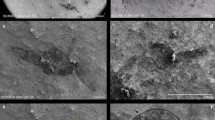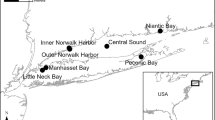Abstract
THE accumulation of euphausiids at the surface of the sea in dense shoals has been reported frequently (see Marr1 for many examples). It is evident that both mature and adolescent animals may swarm, but the accounts most frequently concern pre-spawning adults.
This is a preview of subscription content, access via your institution
Access options
Subscribe to this journal
Receive 51 print issues and online access
$199.00 per year
only $3.90 per issue
Buy this article
- Purchase on SpringerLink
- Instant access to full article PDF
Prices may be subject to local taxes which are calculated during checkout
Similar content being viewed by others
References
Marr, J. W. S., Discovery Rep., 32, 33 (1962).
Einarsson, H., Dana Rep., No. 27 (1945).
Fisher, L. R., Kon, S. K., and Thompson, S. Y., Bull. Inst. Oceanogr. Monaco, No. 1021 (1953).
Zelikman, E. A., Int. Revue ges. Hydrobiol. Hydrogr., 46, 276 (1961).
Forsyth, D. C. T., Jones, L. T., and Adams, J. A., Scott. Fish. Bull., No. 24, 13 (1965).
Author information
Authors and Affiliations
Rights and permissions
About this article
Cite this article
FORSYTH, D., JONES, L. Swarming of Thysanoessa longicaudata (Kroyer) (Crustacea, Euphausiacea) in the Shetland Islands. Nature 212, 1467–1468 (1966). https://doi.org/10.1038/2121467a0
Issue date:
DOI: https://doi.org/10.1038/2121467a0
This article is cited by
-
A first record of daytime surface swarming by Euphausia lucens in the Southern Benguela region
Marine Biology (1987)
-
Population dynamics and production of euphausiids. I. Thysanoessa longicaudata in the North Atlantic Ocean
Marine Biology (1978)
-
Swarming of Hyperiid Amphipods
Nature (1967)



